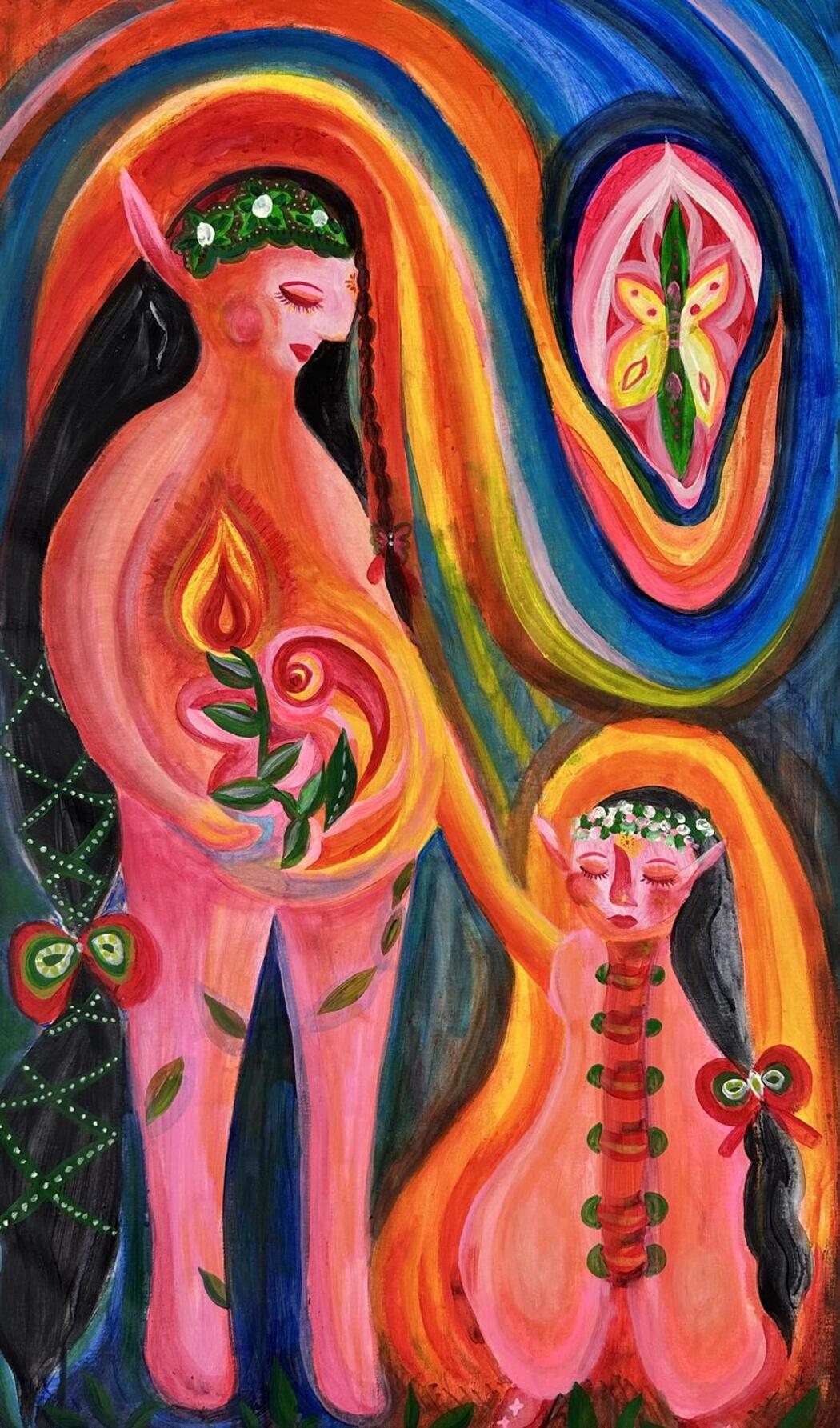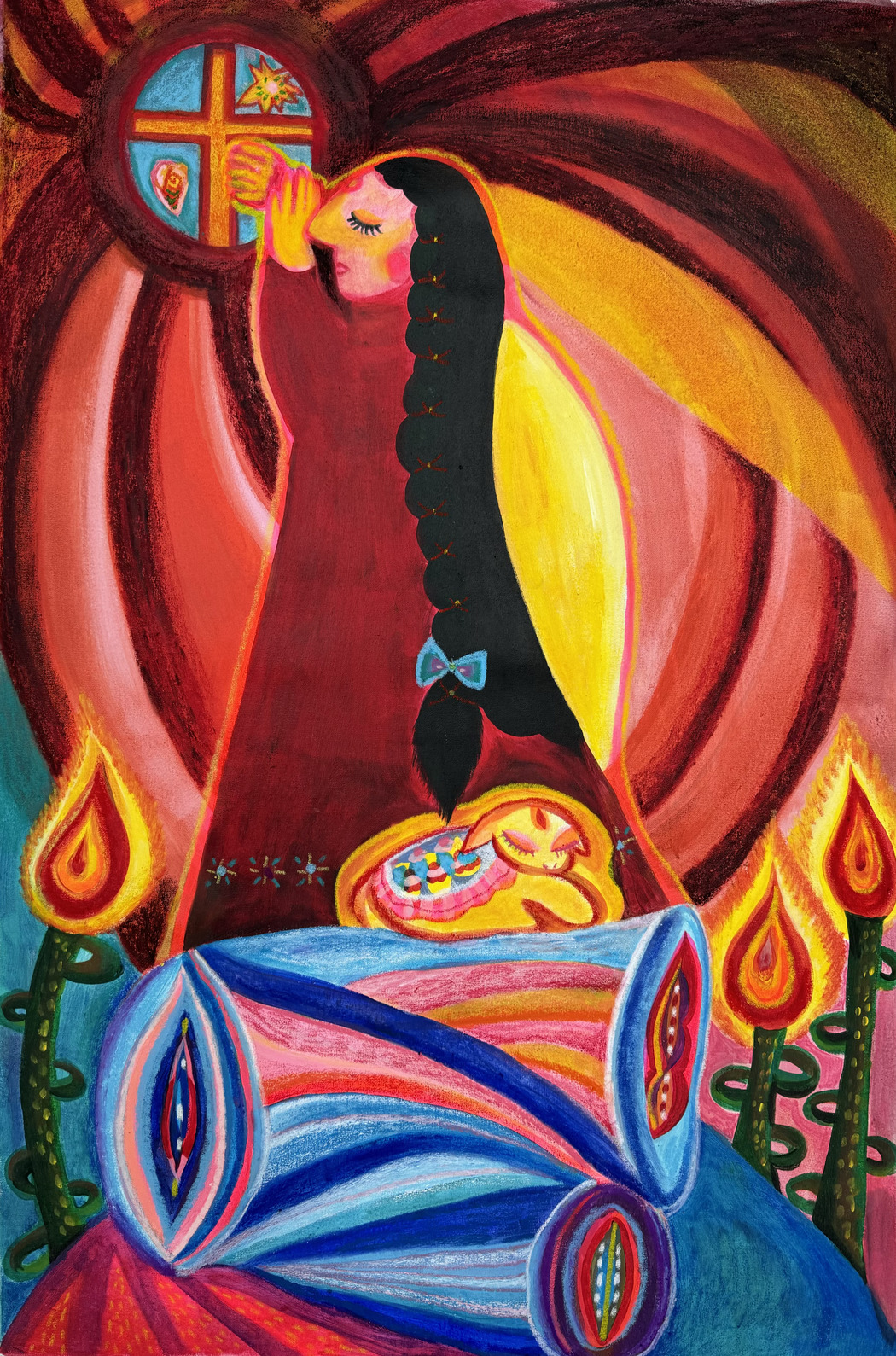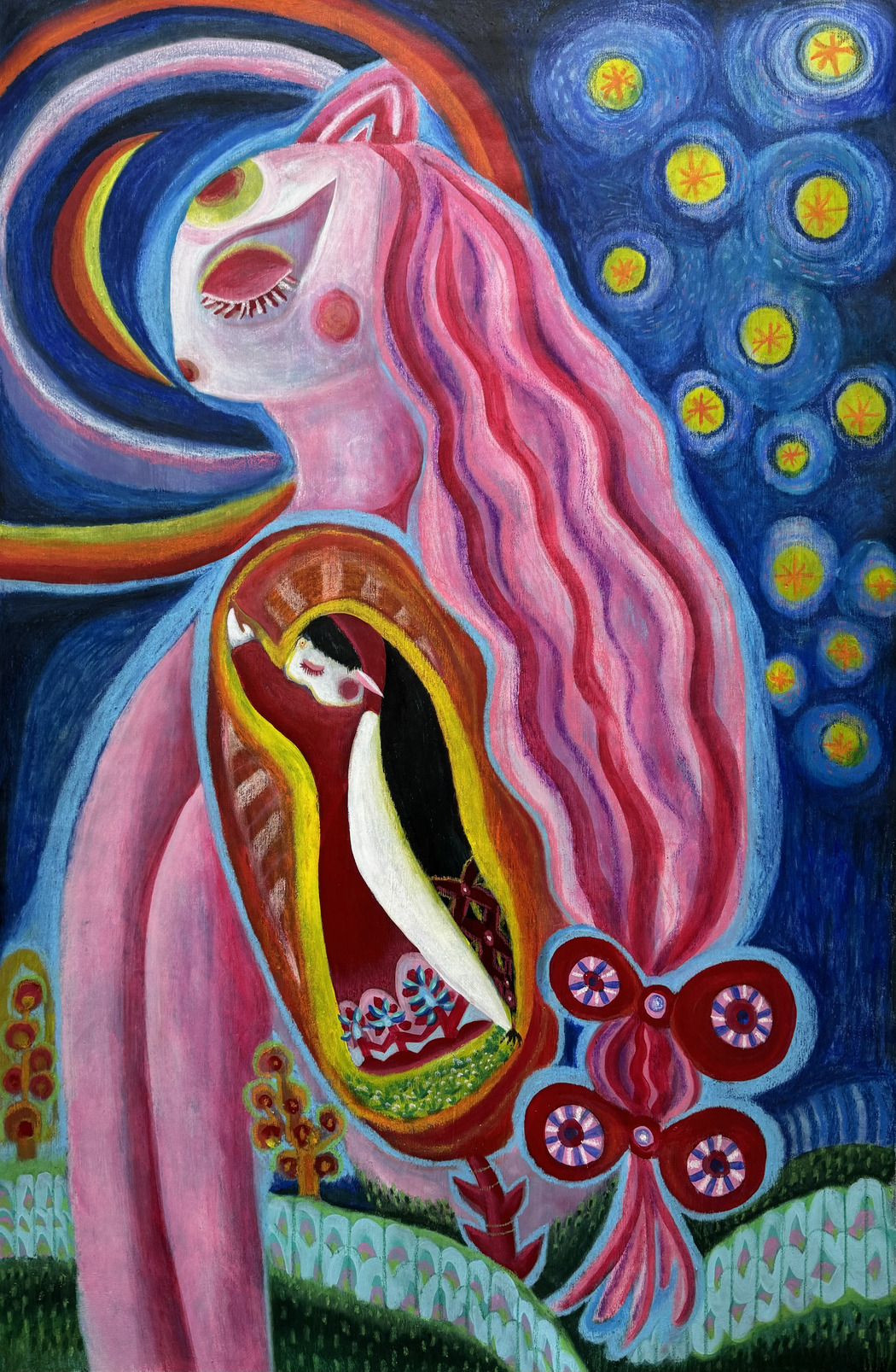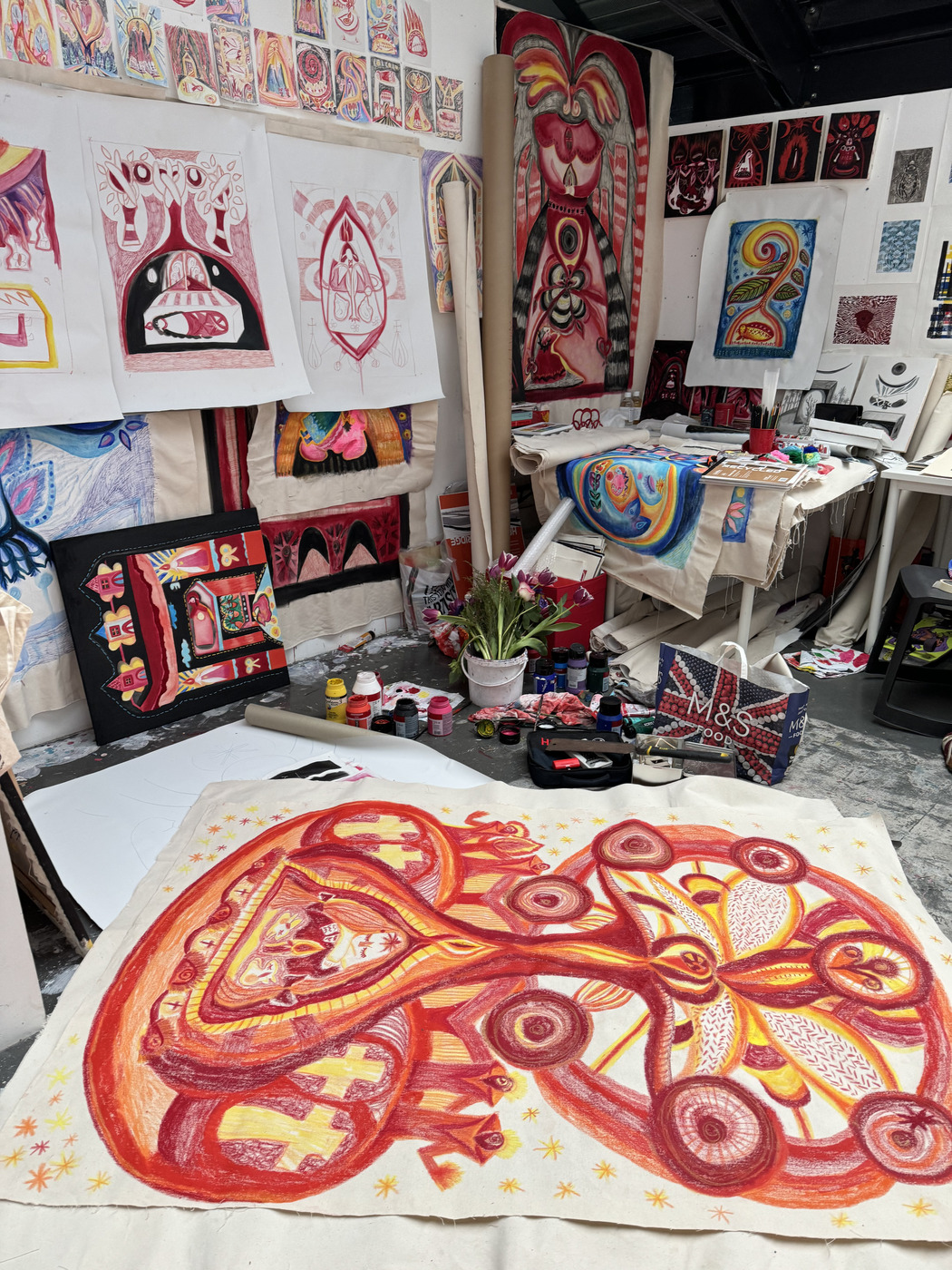Hsin Hwang
Year of birth: 1998
Where do you live: Taipei, Taiwan
Your education: MA, Print, Royal College of Art, London
Describe your art in three words: Mythical, Symbolic, Spiritual
Your discipline: Painting, Printmaking, Mixed Media
Website | Instagram

Hsin Hwang | Nothing can separate us | 2023
How did your background in printmaking at the Royal College of Art shape your current artistic approach across various mediums such as painting, textiles, and installations?
I perceive printmaking as a rhythm of repetition—a quiet incantation where each imprint is both an echo and a reinvention. This cyclical nature has shaped my approach across mediums, weaving its way into my paintings, textiles, and installations. Forms return like recurring dreams, altered yet familiar, layered like memories reshaped by time. In this process, I explore the space between permanence and impermanence, where each mark is a fragment of something continuously unfolding, as if the act of creation itself is a dialogue between past and present, presence and absence, always in flux yet eternally resonant.
Your work explores dream imagery and spirituality. Can you share how Jungian psychology influenced your understanding of the subconscious in your art?
Jungian psychology has shaped my understanding of the subconscious as a realm where personal and collective myths intertwine. His concepts of archetypes and the collective unconscious help me see dreams not as random images, but as symbolic narratives revealing deeper truths. In my work, I embrace dreamlike imagery, repetition, and symbolic motifs to access these hidden layers of the mind. Rather than depicting reality, I construct visual spaces where personal spirituality and collective memory converge, allowing intuition to guide both my creative process and the viewer’s experience.
 Hsin Hwang | Prayer in the spinning sun and the song of seashells | 2024
Hsin Hwang | Prayer in the spinning sun and the song of seashells | 2024
You incorporate elements from fairy tales and mysticism in your work. How do these influences help communicate the universal themes of transformation, healing, and spirituality?
Fairy tales and mysticism offer symbolic languages for transformation, healing, and spirituality. Both traditions use archetypes and allegories to navigate inner and collective metamorphosis. In my work, I reinterpret these motifs—rituals, trials, and supernatural encounters—as psychological and spiritual transitions, reflecting Jungian individuation. Mysticism, with its embrace of the unseen, deepens this exploration, offering a space for transcendence. Through dreamlike imagery and layered symbols, I create visual narratives that echo ancestral wisdom and personal introspection, inviting viewers to engage with their own inner myths and cycles of renewal.
In your recent works, you’ve focused on reinterpreting Taiwan’s indigenous and folk traditions. How do you balance respect for these traditions while making them relevant in contemporary art?
In my recent works, I reinterpret Taiwan’s indigenous and folk traditions by focusing on the imagery of Taiwan’s Traditional Performance Troupes in my paintings. I preserve their core elements—such as vibrant colors and symbolic animals like oxen, lions, and white cranes—while reimagining them through my personal visual language. By studying their historical and spiritual meanings, I ensure that my reinterpretations remain rooted in respect and authenticity. At the same time, I adapt these symbols into contemporary compositions, allowing them to resonate beyond their original context and connect with broader themes of transformation, movement, and collective memory.
 Hsin Hwang | The Pony and the Prayer | 2024
Hsin Hwang | The Pony and the Prayer | 2024
Your art often centers on female transformation and resilience. What inspired you to explore the evolving roles of women in myth and belief through your work?
Inspired by the female characters in fairy tales, I explore themes of strength, adaptability, and spiritual depth. Many heroines undergo profound transformation—through trials, exile, or self-discovery—reflecting resilience and growth. These narratives reveal shifting cultural perceptions of women, from passive figures to active agents of their own fate. Through painting and symbolism, I seek to illuminate their hidden power and reshape their journeys through a contemporary lens.

How do you think your cross-cultural exploration of spirituality has shaped the way your audience connects with your work, especially with themes like nature worship and ancestral wisdom?
By weaving together spiritual symbols from different cultures, I create a visual language that resonates across traditions. When I exhibited works inspired by Taiwan’s Indigenous myths in London, many viewers recognized similar narratives from their own cultures. Themes like nature worship and ancestral wisdom tap into shared human experiences, bridging the past and present and making ancient beliefs relevant in contemporary contexts.
Can you elaborate on the significance of the vivid colors and symbolic elements you use in your art? What do they represent within the spiritual and mythological narratives you’re creating?
My use of color is highly intuitive, influenced by Marc Chagall’s paintings and Indigenous totems, both of which convey emotional and spiritual intensity. Many of my symbols correspond to natural elements or ancient magical sigils, acting as visual markers of transformation, protection, and unseen forces. Through these elements, I build a layered narrative that bridges folklore, belief, and personal mythology.

Leave a Reply